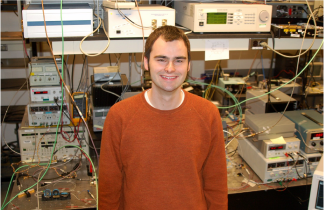
Schematic of SERS Technique from Kneipp et al Chem. Soc. Rev., 37, 1052–1060, (2008).
There has been a lag in my blog posting lately as I was recently performing my civic duty as juror in a narcotics case in my county for the last three days. Of course as a laser scientist my mind wandered from the case from time-to-time to the subject of how lasers could have been used to aid the investigation. After some browsing through databases, I found some studies using Raman Spectroscopy and surface-enhanced Raman spectroscopy (SERS) for identification of illegal drugs.
Though no CLEO papers directly address the spectroscopy of controlled substances, there are 65 CLEO papers devoted to applications of Raman scattering, 113 on laser spectroscopy, and an entire session devoted to SERS and applications of Raman scattering, CFA. Surface-Enhanced and Fiber Raman Technologies, on Friday May 21.
SERS and SERS-related techniques have particularly been exploited in biomedical spectroscopy in recent years. Three papers in Friday's session use SERS specifically for biomedical applications. CAF2 exploits SERS to analyze DNA, CAF4 demonstrates SERS through fiber and with a more standard biological imaging wavelength of 800 nm, and CAF6 uses SERS to perform spectroscopy on human skin.
For those who don't know or need refreshing, a Raman spectrum gives information of the characteristic vibration of molecule, a "vibrational fingerprint". Raman cross sections are typically orders of magnitudes weaker than those from fluorescence spectroscopy. By introducing metal nanostructures into a solution of molecules to be probed, a cell, or tissue, one can greatly enhance the Raman signal due to interactions of the opitcal field with surface plasmons. Check out a nice review paper from the Kneipp's for more background, Chem. Soc. Rev., 37, 1052–1060, (2008).

No comments:
Post a Comment